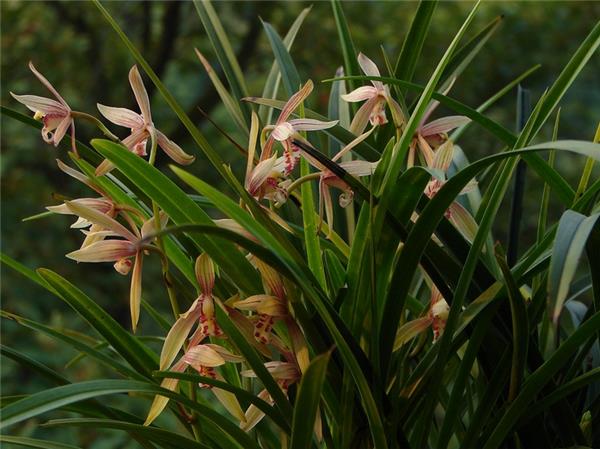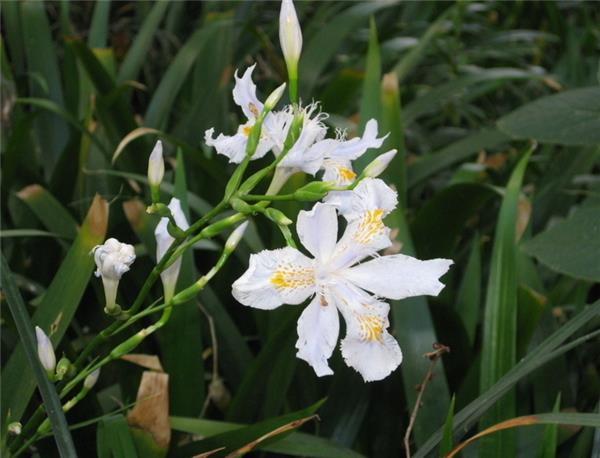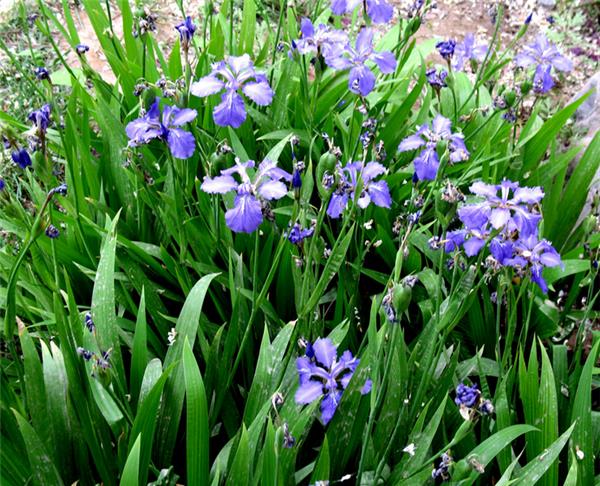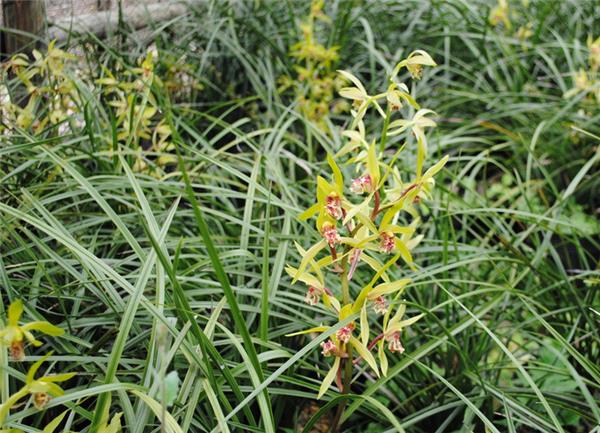Cultivation methods and precautions of bluegrass
In fact, orchid is an orchid, bluegrass is a particularly delicate flower and plant, so it needs to be taken good care of when breeding, the following is to introduce the breeding methods and matters needing attention of bluegrass.

Culture methods of bluegrass
1. Cultivate soil: blue grass should choose slightly acidic humus soil, which can be prepared with peat soil, rotten leaf soil, black mountain mud, pastoral soil, bark block, perlite and vermiculite to facilitate plant respiration and drainage. It can usually be mixed with rotten leaf soil and cultivated soil at 8:2, or peat soil, compost soil, and river sand at 6:3:1.
2. Lighting: bluegrass likes the environment of shade and ventilation, and can not accept direct sunlight. Except in winter, it should be shaded and raised by astigmatism to avoid long-term plant weakness or even diseases and insect pests in the shade. When growing at home, florists can set up a simple curtain to adjust the light. In addition, different orchid varieties received different degrees of light, Cymbidium was the most shade-tolerant, followed by Jian Orchid, Cymbidium and Chunlan.
3. Temperature: the best growth temperature of bluegrass is generally 1624 ℃, the winter temperature is about 10 ℃, the temperature of day and night is 10: 12 ℃ and 5: 10 ℃ respectively, when the temperature is 5 ℃ in the north, it should be put indoors; the summer temperature should be below 30 ℃, otherwise, shading, cooling and humidification measures should be taken.

4. Moisture: the humidity of bluegrass should be kept at 75%-90%, and adjusted according to different species and environment. In spring and autumn, it is usually watered every 2-3 days, and in summer, it can be watered every 1-2 days. In winter, watering is reduced, about once a week. In this season, the water of the flowering magnolia can be increased appropriately. Avoid splashing water on the leaves when watering. Rain Water and snow water are the best water quality.
5. Fertilizer: bluegrass is fond of light, and light fertilizer should be applied, which needs to go through ripening, mainly in the cultivated soil or in the later growth period, generally applying fertilizer to the foliar surface, or applying thin fertilizer to the root. Nitrogen fertilizer was applied first at seedling stage, phosphorus and potassium fertilizer could be applied when seedlings grew to 5~6cm, and nitrogen fertilizer was applied once a week for big seedlings. During the plant growth period, 15% rotten thin cake fertilizer can be applied for 15 to 20 days, and 0.2% potassium dihydrogen acid or plant ash water can be sprayed on the leaf surface for 2 times from pre-flowering to flowering.
6. Diseases and insect pests: bluegrass is vulnerable to shell insects, whitefly, ants, etc. The first two can be eliminated with 1000 times of dichlorvos EC and 2000 times of cyanobacteria, and ants can be concentrated and eliminated through meat and bones. In the disease, the plant is easy to suffer from black spot, anthracnose, white silk disease, etc., timely removal of diseased leaves and burning, improve ventilation and light, control humidity, and cooperate with related pesticide control.

Matters needing attention in Orchid Culture
1. Orchids are mainly distributed in the southeast and southwest. Most of them are wild in the shade places under the sparse forests and rock edges of the moist valleys, so they like warm and humid climate, like shade and dampness, and require shade of 70% to 90%, avoiding high temperature, dryness and strong light.
2. The withered and yellow old leaves and disease and insect leaves should be cut off continuously in orchid cultivation to facilitate ventilation. After the flower buds are unearthed, each plant should leave a strong flower bud and the rest should be cut off so as not to consume too much nutrients and affect flowering in the coming year. After the flower fades, the flower stalk should be cut off.

3. In winter, attention should be paid to cold protection, geophytic orchids have strong cold resistance, while orchids require higher overwintering temperature, so they should move indoors or use plastic sheds as soon as possible to avoid cold, and the room temperature should be kept at 10: 15 ℃. Indoor maintenance should pay attention to ventilation. The climate is getting warmer in spring, and gradually move the orchid to the courtyard or balcony.
4. Natural Rain Water, stream water, well water and river water are the best for family cultivation of orchids. If tap water is used, it should be stored in a tank first, and then used after being exposed to the sun to remove bleach. If the flowers are watered with tap water for a long time, the cultivation substrate will be gradually alkalized. Ferrous sulfate can be applied every once in a while to increase the acidity of the soil. in addition, watering orchids with fermented Amoy rice water can also keep the soil slightly acidic.
Related
- Wuhan Hospital Iron Tree Blooming Result Was Instantly Frightened by the Gardener Master
- Which variety of camellia is the most fragrant and best? Which one do you like best?
- What is the small blue coat, the breeding methods and matters needing attention of the succulent plant
- Dormancy time and maintenance management of succulent plants during dormancy
- Minas succulent how to raise, Minas succulent plant pictures
- What are the varieties of winter succulent plants
- How to raise succulent plants in twelve rolls? let's take a look at some experience of breeding twelve rolls.
- Attention should be paid to water control for succulent plants during dormant period (winter and summer)
- Watering experience of twelve rolls of succulent plants
- Techniques for fertilizing succulent plants. An article will let you know how to fertilize succulent plants.



